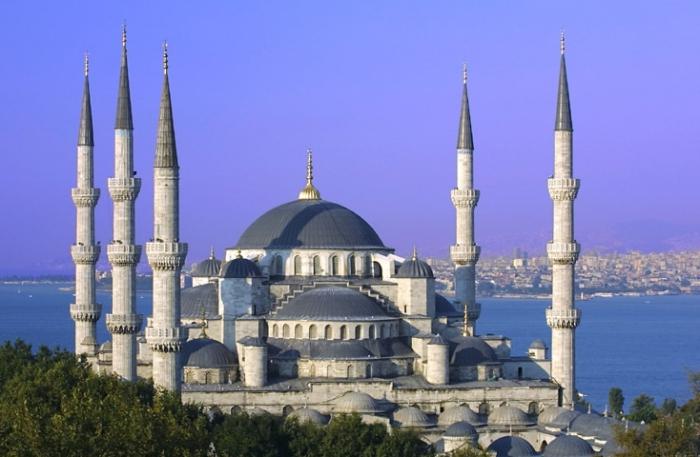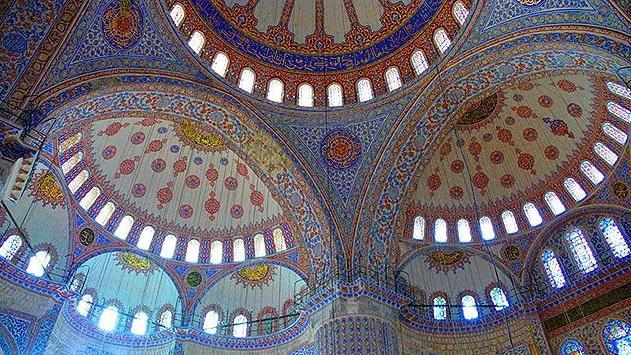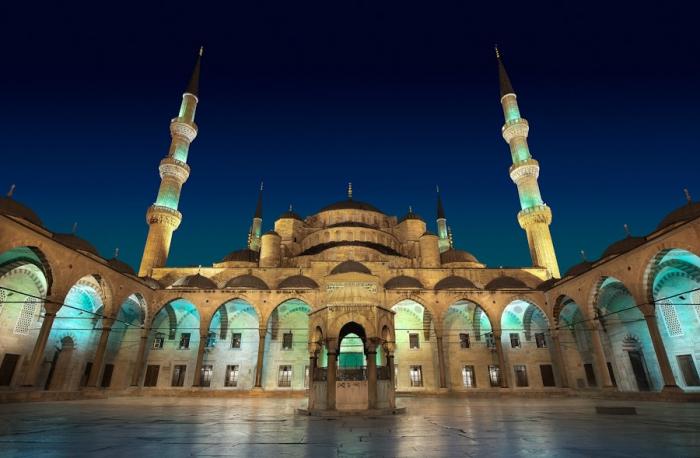It is not difficult to name the architectural monuments that glorified Istanbul all over the world: the Blue Mosque, Hagia Sophia, the Top Capa Sultan's Palace. But the mosque has a special story, and, by the way, another official name: Ahmediye. It was built for political reasons by the young ruler Ahmed I, and it was named after him. At the beginning of the XVII century, the position of Turkey in the political arena was pretty much shaken. To emphasize the imperial scope, the ruler of the Great Port decided to begin the grandiose construction of the temple.
Where the palace of the Byzantine emperors once stood, a new metropolitan shrine — the Blue Mosque — was to appear. Istanbul at that time already had one of the greatest temples - Hagia Sophia, a Christian Cathedral of Hagia Sophia of Constantinople converted in the Muslim manner. However, the ambitious young sultan decided to build the temple of God initially according to all the canons of Islam. Skillful architect Zedefkar Mehmed-Aga was appointed to lead the construction.

The architect had a difficult task: after all, the Blue Mosque had to rise directly opposite Hagia Sophia, not compete with it, but not complement it. The master got out of the situation with dignity. Two temples elusively create a single architectural ensemble due to the fact that the domes of Ahmedia form the same cascade as in St. Sophia. Just as subtly and unobtrusively, the architect inherits the Byzantine style, skillfully diluting it with the Ottoman, only slightly departing from the classical Islamic canons. To prevent the interior of the huge building from looking gloomy and dark, the architect solved the lighting problem by planning 260 windows for which glass was ordered in Venice.

Since Sultan Ahmed ordered something special to glorify Allah, the Blue Mosque was decorated not with four minarets - in the corners of a square fence, but with six. This led to a small embarrassment in the Muslim world: before that, only one temple had five minarets - the main mosque in Mecca. Therefore, the mullahs saw in six outbuildings of the temple a manifestation of Sultan’s pride and even an attempt to belittle the significance of Mecca, sacred to all Muslims. Ahmed I hushed up the scandal, sponsoring the construction of additional minarets to the shrine in Mecca. Thus, there were seven of them, and the subordination was not broken.

The Blue Mosque has another unusual feature: a niche for prayers was carved from a single piece of marble. Since the temple was built as a Sultan, a separate entrance was provided for the ruler. He came here on horseback, but before entering the gate a chain was pulled, and in order to pass, the Sultan, unwittingly, had to bend over. This demonstrated the insignificance of a person, even endowed with supreme power, in the face of Allah. The temple was surrounded by numerous extensions: a madrasah (high school and seminary), a caravanserai, a hospital for the poor, and a kitchen. In the middle of the courtyard there is a fountain for ritual ablutions.
The Blue Mosque is called so because of the large number of blue tiles that adorn the interior of the temple. The young sultan, who began construction in 1609, when he was only 18 years old, could only rejoice at the finished work of his hands for only a year: the construction was completed in 1616, and in 1617 the 26-year-old Ahmed died of typhus. Its mausoleum is located under the walls of Ahmediye, which the people stubbornly call the Blue Mosque.